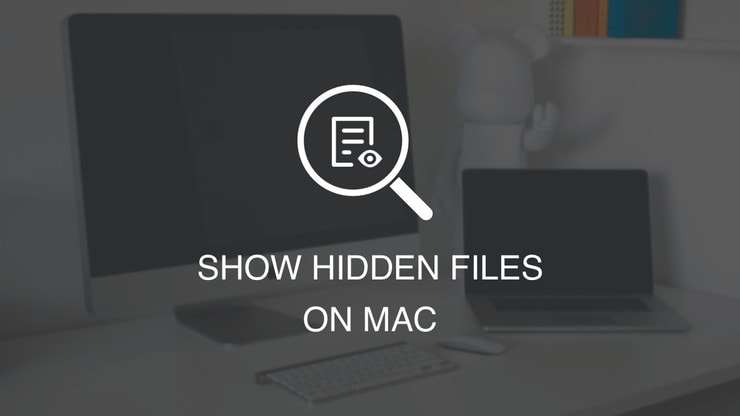
If ( do shell script "defaults read AppleShowAllFiles") is equal to "False" thenĭo shell script "defaults write AppleShowAllFiles True"ĭo shell script "defaults write com.apple. Attribution to, and submitted by Baltwo on Apple Support Communityĭo shell script "defaults read AppleShowAllFiles"ĭo shell script "defaults write AppleShowAllFiles False" Save as an Application (option + File menu : Save As…)ĭrag and drop from Applications to your Dock, or to the Finder window toolbar (short filename e.g.Save in Documents or your location choice for safe keeping.File Format: Text (this adds an applescript extension to your filename.
VIEW HIDDEN FILES MAC OS CODE
Save the source code that you have just pasted as Text Step 2 In the left column, select Devices then open the Macintosh HD folder.Now run it (black triangle button) with an open Finder window on your home directory. The visual indicator of hidden files and folders is fairly obvious.
VIEW HIDDEN FILES MAC OS MAC OS
Just remember that pressing down Command + Shift + Period in the file system of Mac OS will hide or show invisible files. Copy and paste the following (see below) AppleScript into the Script Editor. Command + Shift + Period is the Keyboard Shortcut for Toggling Hidden Files in Mac OS. Launch your Script Editor (Launchpad : Other : Script Editor). The following was tested on OS X 10.11.5. If you decide to remove from the Finder window toolbar, then press the command key and click/drag the icon off. You could make an AppleScript application that you place in your Dock, or even the Finder toolbar, and each time that you click it, hidden files/folders appear or disappear.

:-( Am using Macbook Air and El Capitan Version 10.11.4 To do so, hold down the “Alt” key and right-click or two-fingered click on the Finder icon. Your new setting will take effect after you relaunch finder. This can be done by selecting “Quit Terminal” from the Terminal menu.

Terminal is a utility that provides access to the OS X El Capitan operating system. Open your Finder>Go> Home folder then command J to see view options I've tried everything I could find in this forum and others to do so. Remember, there are other ways to clear the cache or do backups on your Mac without revealing essential files.Really frustrated! I want Finder to show hidden files and folders. The first and easiest method is using Mac Finder to show hidden files: Open the folder where you want to search for hidden files. Whether you opt for third-party apps or native software, you should be super careful and avoid tampering with the system files.
VIEW HIDDEN FILES MAC OS SOFTWARE
In reality, you don’t need any third-party software if you want to reveal files for quick fixes.

Like DCommander, Forklift has a dual-pane interface and allows for advanced file management like transferring between servers and apps. Tick the box in front of the “Show hidden files” option, and you are good to go. To view the hidden files, select “ View,” then “Viewing Options” at the bottom of the menu. This app looks and functions similarly to Mac’s Finder, so it might be easier for you to manage and reveal the files and folders. If you are just a regular user, Forklift might be your best option. The app also offers a few advanced features for power users, and it’s all neatly packed into intuitive tabs and pop-up windows. The app has a Show System Files button in the toolbar, but you need to enable it manually.


 0 kommentar(er)
0 kommentar(er)
